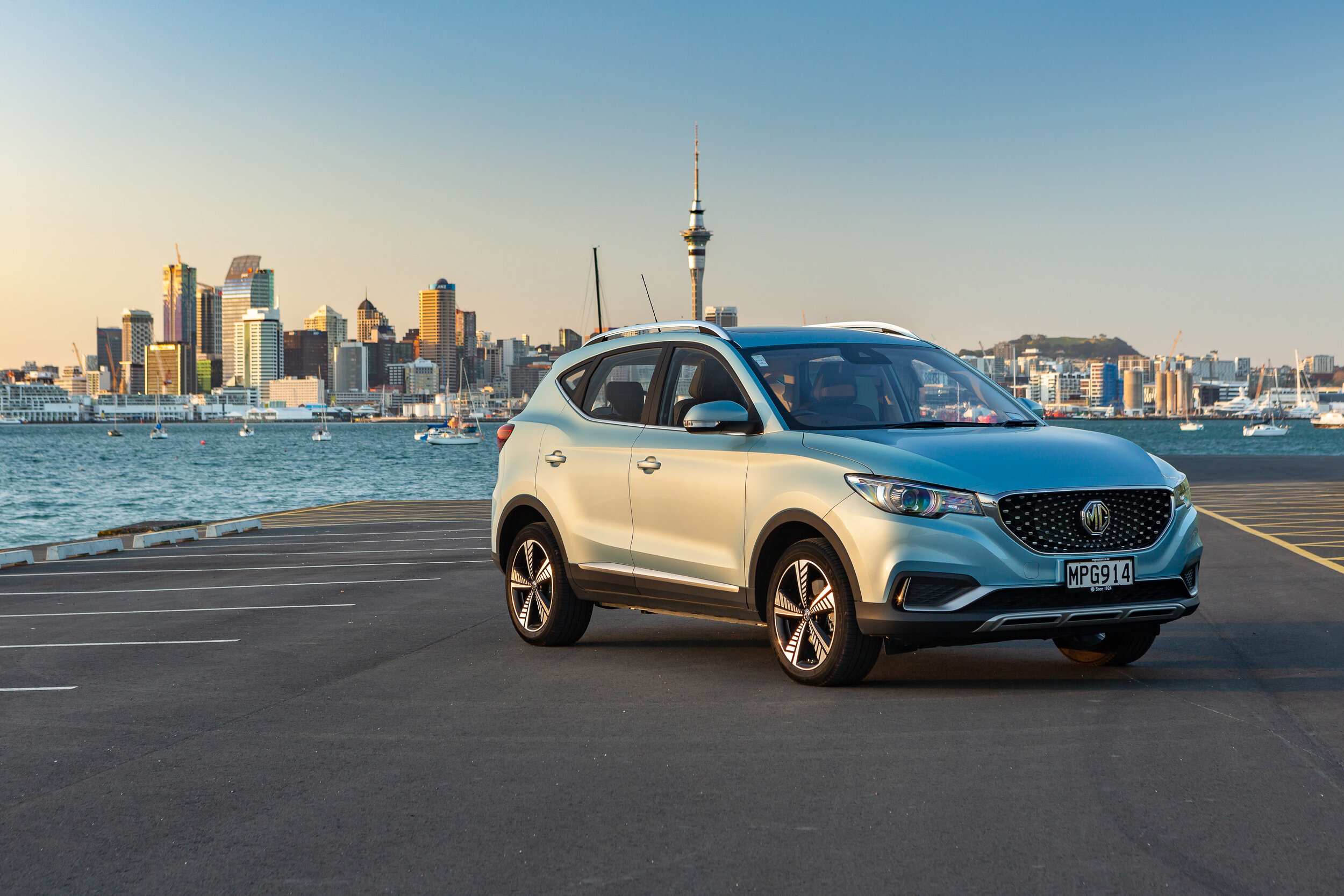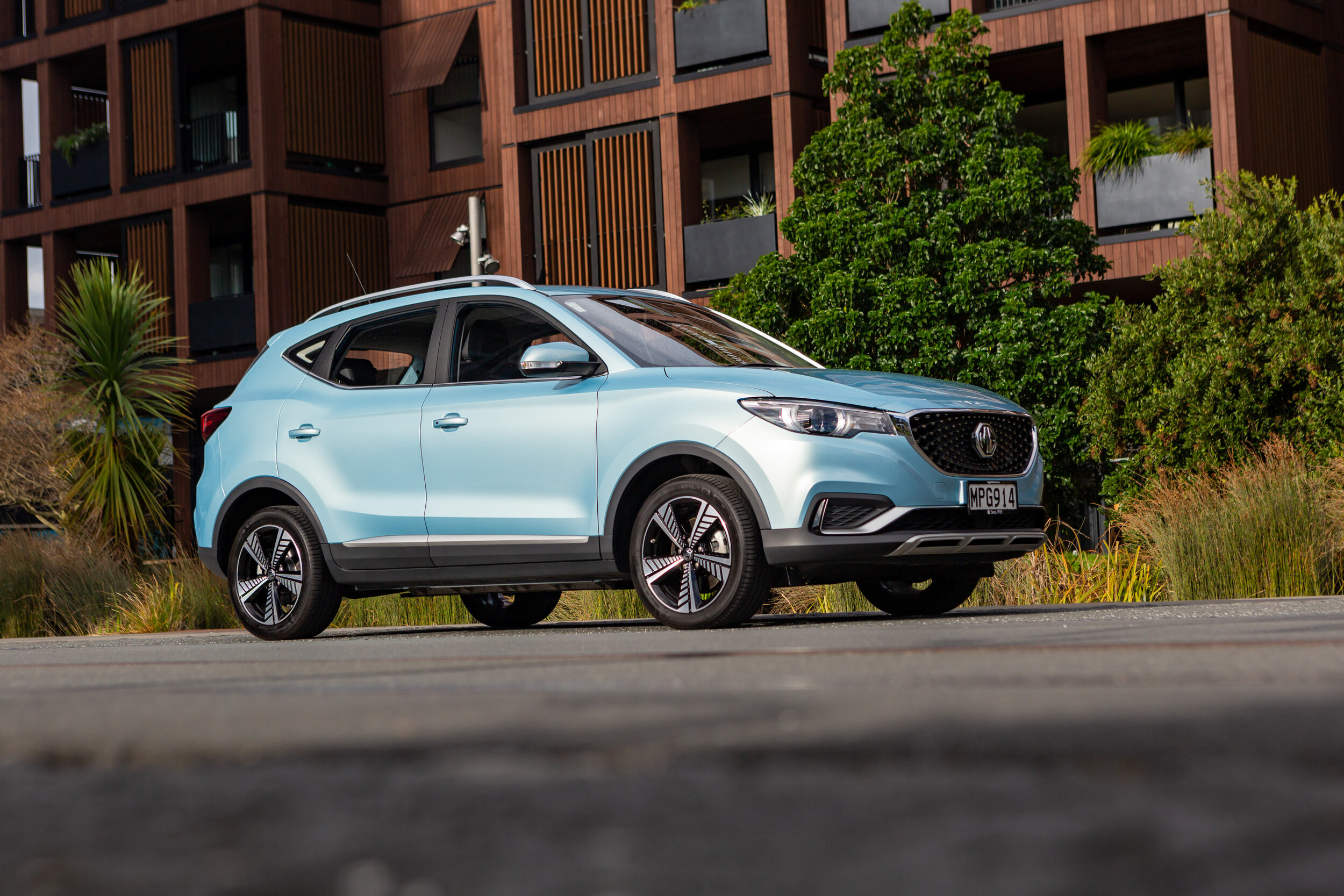ZS hybrid to fill in for outgoing full electric
/As expected, the incoming second-generation of the car that reinstated MG here has the same petrol-electric as MG3, as well as full petrol choices.
Read MoreAs expected, the incoming second-generation of the car that reinstated MG here has the same petrol-electric as MG3, as well as full petrol choices.
Read MoreDistributor indicates 72kWh battery announced from other markets not required for Australasia.
Read MoreImportant updates for the fastest-rising new car from a Chinese brand are on a slow boat.
Read More
INTENT to establish the MG ZS EV as the country’s cheapest new electric car has seen the distributor move yet again on the pricing, clipping $7000 off the tag it had only recently set.
A repricing to $48,990, announced today, means the model becomes the first sub-$50,000 brand-new fully electric car and also means it retails for $1000 less than the ‘special introductory price’ that was offered to the first 50 orders, when that book was opened a year ago.
Once that count was fulfilled, MG revised the price to $50,100 for the next 100 pre-orders. Then, when the car ultimately landed, it debuted with an official sticker price of $55,990.
MG has not yet clarified if any remuneration cheques are in the mail.
The new pricing allows even more space between this model and others that could be conceived as rivals, though those cars - the Nissan Leaf, Hyundai Ioniq EV and Volkswagen’s e-Golf - were still more expensive when the MG held its previous price. The e-Golf is really out of the hunt anyway, as supply of that model exhausts at the end of the month.
The MG’s price drop could well raise its allure with the Government, which has recently signalled interest in accepting the models as a potential fleet car.

The electric MG comes with an eight-year/160,000km battery warranty plus a five year/unlimited kilometre vehicle warranty and five year roadside assist package.
“The first cars are arriving in dealers now and our business plan is designed to make EVs more affordable and available to everyone,” said MG Motor Australia and New Zealand chief executive Peter Ciao.
“We are making a commitment that each electric vehicle sold by MG locally will offer value that encourages mainstream adoption. MG wants to make zero-emission motoring add up for the first time for customers locally.
“An attainable electric vehicle is the first step in creating demand in market which will lead to better infrastructure, something that MG Motor is a proud champion of.”
The ZS EV’s 44.5kWh battery pack is larger than that in the Leaf and Ioniq, but claimed combined range of 262 kilometres is less than for the Hyundai. MG says the car will achieve 370km at urban pace. The electric motor creates 105kW of power and 353Nm of torque.
Eighty percent charge is expected to come in 40 minutes when the MG is plugged into a 50kW CCS charger.
MG also recently put up interesting argument about the relevance of the products mixed heritage; being a ‘British’ brand now in ownership of China’s largest producer of electric cars, Shanghai Automotive.
Auckland-based country manager Antony MacLean conjects any reputational stigma is unwarranted and that a vehicle's country of origin is no longer relevant.
Cars these days are international products, he says. As example, MG’s safety systems are from a German company, Bosch. He also reminded that as much as Apple is perceived as an American brand, it was common knowledge iPhones were only made in China.


GOVERNMENT has joined private buyers in showing interest in the first electric car offered here by a Chinese brand.
Getting onto the an all-of-Government fleet tender system, from which Government department drive choices are made, was recently acknowledged by Anthony MacLean, country manager for the car’s maker, SAIC Motor, and is a big green tick for the MG ZS EV.
The medium crossover will release in November for $55,990 plus on-roads, a sticker that will make it the country’s cheapest wholly battery-driven car – a title presently held by two contenders, the Nissan Leaf and Volkswagen e-Golf. Both currently listed at $61,990.
Though the price-leader status is not necessarily indicative of electrics suddenly becoming cheaper to build – in that this model is still almost double the price of the most expensive of the four petrol versions – the EV’s placement will surely hold appeal to taxpayer-funded fleets that have been tardy to follow policy to buy more electrics, mainly because it has struggled to afford them.
The five-seater model is from MG, which through its background of British birthright, prefers to see itself an international entity, though it’s ownership by Shanghai Automotive (SAIC) rates it as a pukka Chinese automotive industry success story.
As sharp as the launch price might seem, the car was even cheaper for the 120 Kiwis who pre-ordered.
Fifty who put their dollars 12 months ago benefitted from an early bird $49,990 buy-in that achieved target within a fortnight of announcement.
Conceivably, if the Government gives it a go, then the purchasing process will seek to extract an even cheaper deal.
Expectation of discounts of up to 30 percent off RRP are often cited when the industry lets slip about the State’s bulk purchase processes.
The car is an intriguing opportunity. With a 44.5kWh lithium-ion battery, a 110kW/350Nm permanent magnet synchronous motor, and a NEDC-based electricity consumption of 13.8kWh per 100km, it seems set to offer reasonable performance.

Whether it will raise range anxiety has yet to be seen. In respect to how far it goes on a charge, with a factory-cited 262kms it tops the Golf but bows to size-equivalents the Leaf and Hyundai Kona.
MG Motor New Zealand itself has set a slightly lower range expectation of 250km based on driving in Auckland, mixing with urban traffic but excluding motorways, with the air conditioning on and with a driver and passenger. It says this trial was undertaken to validate real world range versus WLTP testing data, not to confirm or claim motor efficiency.
How it might perform at a steady 100km has yet to spelled out. But there’s good reason why the brand is reminding its customer base that the national recharging network is in reasonable shape, with a public charging point of some kind available every 70kms of main national highway on average.
The CCS Combined and Type 2 charging ports in the grille are compatible with the national charging infrastructure. The car can be powered up to 80 percent in 40 minutes using a 50kW fast-charger, seven hours with a 7kW charger unit of the type that can be installed at home - or simply trickle charged using a standard three-point plug.
SAIC Motor makes its own charging boxes, but MG here has opted to use a third party supplier, TransNet, to supply and install a Wallbox range of home chargers in customers’ homes.
MG has also announced a T edition of the ZS in 1.3-litre turbo petrol format, featuring the MG Pilot driver safety provision that packages a spread of assist functions, including forward collision warning, auto emergency braking, lane departure warning, a traffic jam assist and adaptive cruise with an intelligent capacity.
MotoringNZ reviews new cars and keeps readers up-to-date with the latest developments on the auto industry. All the major brands are represented. The site is owned and edited by New Zealand motoring journalist Richard Bosselman.